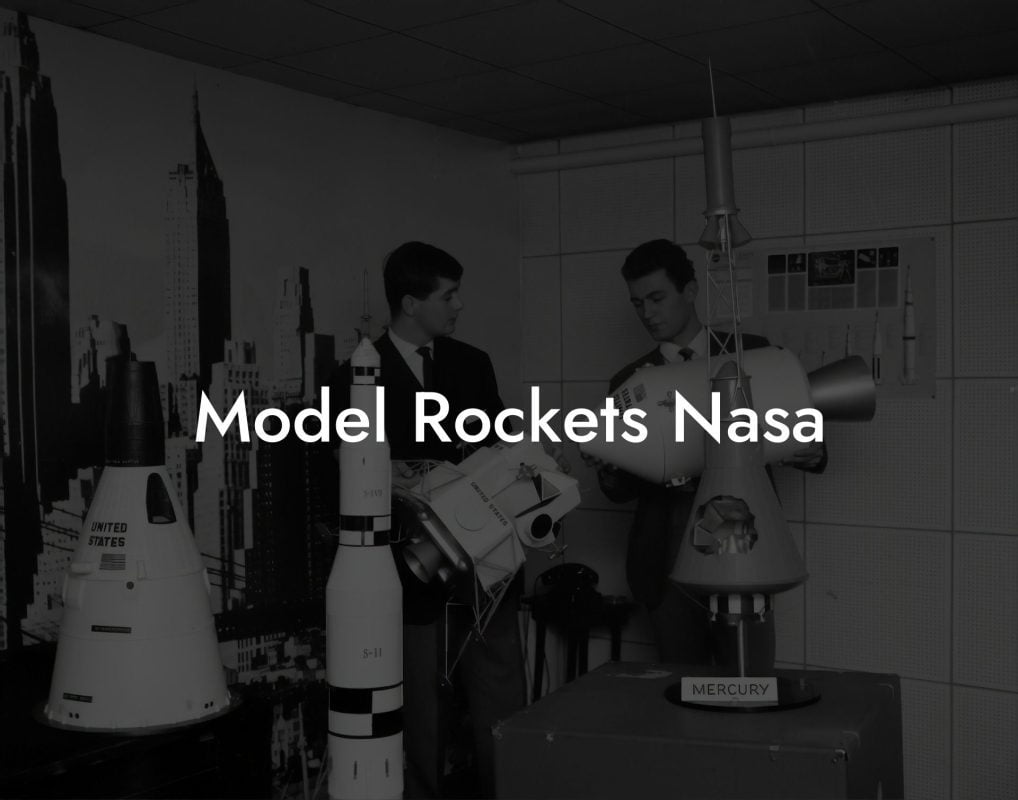Imagine a world where launching model rockets is not only thrilling but also safe and responsible. Welcome to the realm of model rocketry, where enthusiasts of all ages come together to explore the wonders of aerospace engineering and push the boundaries of innovation. As you embark on this exciting journey, it's essential to understand the rules and laws that govern model rocket launches, ensuring a fun and secure experience for everyone involved.
Quick Links to Useful Sections
What Are the Rules and Laws of Model Rocketry?
Model rocketry is a regulated activity, with guidelines and laws in place to protect people, property, and the environment. The primary governing body for model rocketry in the United States is the National Fire Protection Association (NFPA), which sets standards for the design, construction, and operation of model rockets.
The NFPA Code 1122, "Code for Model Rocketry," outlines the safety requirements for model rockets, including specifications for rocket motors, ignition systems, and launch sites. Additionally, the Federal Aviation Administration (FAA) regulates model rocket launches that reach altitudes above 400 feet, requiring operators to notify the FAA and follow specific guidelines.
Federal Laws and Regulations
In the United States, model rocketry is subject to federal laws and regulations, including:
- Federal Aviation Administration (FAA) Regulations: The FAA regulates model rocket launches that reach altitudes above 400 feet, requiring operators to notify the FAA and follow specific guidelines.
- National Fire Protection Association (NFPA) Code 1122: This code sets standards for the design, construction, and operation of model rockets, ensuring safety and minimizing risks.
- Environmental Protection Agency (EPA) Regulations: The EPA regulates the use of certain chemicals and materials in model rockets, ensuring they do not harm the environment.
State and Local Laws
While federal laws provide a framework for model rocketry, state and local laws can vary significantly. It's essential to familiarize yourself with the specific regulations in your area, as they may differ from national guidelines.
Looking For The Best Model Rocket Kits? You'll Love These:
Some states and localities have laws governing:
- Launch Site Permits: Many states and localities require permits or licenses to launch model rockets in specific areas.
- Age Restrictions: Some states have age restrictions for purchasing and launching model rockets.
- Zoning Laws: Local zoning laws may restrict model rocket launches in certain areas, such as residential neighborhoods or protected wildlife habitats.
Model Rocketry Organizations and Guidelines
Several model rocketry organizations provide guidelines and resources for enthusiasts, including:
- National Association of Rocketry (NAR): The NAR is a leading organization for model rocketry in the United States, providing safety guidelines, launch site resources, and educational materials.
- Tripoli Rocketry Association (TRA): The TRA is another prominent organization for model rocketry, offering safety guidelines, launch site resources, and competitions for enthusiasts.
Best Practices for Safe and Responsible Model Rocketry
While laws and regulations provide a framework for model rocketry, it's essential to follow best practices to ensure a safe and enjoyable experience:
- Always Follow Manufacturer Instructions: Read and follow the instructions provided by the rocket manufacturer, including safety guidelines and launch procedures.
- Conduct a Pre-Launch Safety Check: Inspect your rocket and launch equipment before each launch, ensuring everything is in good working condition.
- Choose a Safe Launch Site: Select a launch site that is away from people, animals, and flammable materials, with a clear trajectory for the rocket's flight.
- Be Aware of Weather Conditions: Avoid launching model rockets in strong winds, thunderstorms, or other hazardous weather conditions.
Frequently Asked Questions (FAQs)
Here are some frequently asked questions about the rules and laws of model rocketry:
1. Do I need a license to launch model rockets?
In most cases, no license is required to launch model rockets. However, you may need to obtain a permit or follow specific guidelines in your area.
2. Can I launch model rockets anywhere?
No, you should only launch model rockets in designated areas, away from people, animals, and flammable materials.
3. What is the maximum altitude for model rockets?
The maximum altitude for model rockets varies depending on the type of rocket and local regulations. Generally, model rockets should not exceed 400 feet in altitude.
4. Can I launch model rockets at night?
While it's technically possible to launch model rockets at night, it's not recommended due to reduced visibility and increased risk of accidents.
Resources and community Support: Your Next Steps
As you embark on your model rocketry journey, it's essential to stay informed about the rules and laws governing this exciting hobby. Here are some resources and community support options to help you get started:
- National Association of Rocketry (NAR): The NAR is a leading organization for model rocketry in the United States, providing safety guidelines, launch site resources, and educational materials.
- Tripoli Rocketry Association (TRA): The TRA is another prominent organization for model rocketry, offering safety guidelines, launch site resources, and competitions for enthusiasts.
- Local Model Rocketry Clubs: Joining a local model rocketry club can provide valuable networking opportunities, launch site access, and guidance from experienced enthusiasts.
Looking For The Best Model Rocket Kits? You'll Love These:
Useful Interruption: Dive deeper into the world of Model Rockets with our most popular sections. If there is anything you think is missing or anything you would love for us to write about, just give us a shout.
- Getting Started & Basics With Model Rockets
- Model Rocket Design, Build & Customization
- Model Rocket Propulsion & Engine Technology
- Model Rocket Launch Techniques & Recovery
- Model Rocket Advanced Rocketry & Innovations
- Model Rocket DIY and Customization
- Model Rocket Equipment Reviews & Digital Tools
- Community, Competitions & Education
- Model Rocket Troubleshooting & FAQs
- Model Rocket Bonus/Seasonal & Niche Topics
A group of model rocket enthusiasts gathered at a field for their weekly launch event. Among them was Dave, a seasoned builder known for pushing the limits of hobby rocketry. This time, he had outdone himself.
“Ladies and gentlemen,” Dave announced, dramatically pulling a cloth off his latest creation, “I present to you: The Kraken!”
The crowd gasped. This wasn’t just a model rocket, it was a monster. The thing stood 8 feet tall, had six clustered engines, and was covered in enough duct tape to qualify as a classified aerospace project.
“Dave,” muttered Steve, the cautious safety officer, “Have you, uh… done the math on this?”
“Math?” Dave scoffed. “I built it in my garage at 3 a.m. with parts from eBay. This is an art piece, Steve.”
The countdown began.
5…
4…
3…
2…
1…
The engines ignited with a BOOM, and The Kraken shot up… kind of. It immediately did a violent barrel roll, narrowly missing the spectators before skyrocketing at an angle that could only be described as “legally questionable.”
The crowd collectively ducked as The Kraken flew straight over the adjacent cornfield, where Old Man Jenkins, the grumpiest farmer in town, was minding his business.
KABOOM!
The rocket disappeared behind the barn. A moment later, a flaming piece of Estes igniter wire landed at Steve’s feet. The silence was deafening.
And then, an unmistakable sound echoed across the field.
Jenkins’ shotgun being cocked.
“DAVE!!!” Steve shouted. “RUN.”
And that was the day Dave invented the first-ever biologically powered rocket booster: pure adrenaline.
To this day, nobody knows where The Kraken landed, but legend has it, it still haunts the skies, terrifying unsuspecting drones and low-flying birds.















